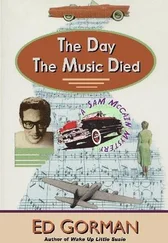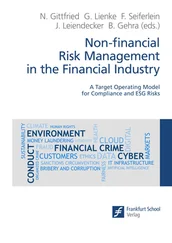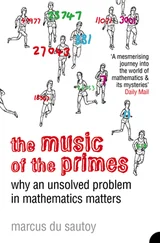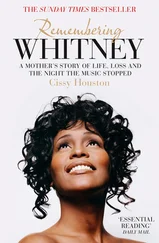Reznor reflects on his time as a DIY musician: ‘It took the wind out of my sails as far as thinking of direct-to-customer as a sustainable business for a musician. In a way, that experience gave me a pre-emptive look at music today. You’re not making money from albums; instead they’re a vessel for making people aware of you. That’s what led me to thinking that a singular subscription service clearly is the only way this problem is going to be solved. If we can convert as many music fans as possible to the value of that, in a post-ownership world, it would be the best way to go’ (Marchese 2017).
Reznor’s bruising experience of the disruption of the music economy during the first two decades of this millennium is a striking parable of the journey that the industry has taken since Shawn Fanning 2released peer-to-peer file-sharing to the masses in 1999 and changed the music industry forever. The insights gained during this turbulent process have been both costly and painful, but it was during this period and through experiments such as Ghosts I–IV that the contemporary music economy was forged.
While Ghosts I–IV was not as financially viable as Reznor would have liked; it was a creative and fundamental break with the twentieth-century music industry model where vertically integrated multinational music companies controlled how, when and where their albums are released, promoted and distributed. The core of the Ghosts I–IV project was not the set of tracks recorded in Reznor’s recording studio in the outskirts of Beverly Hills. Rather, it was Reznor’s relationship with his fans and in the thousands of remixes, videos, comments and blog posts uploaded to nin.com, YouTube, ninremixes.comand a host of other more or less shady places in the Cloud.
‘The Cloud’ has been used as a metaphor to denote the Internet since the late 1960s and early 1970s, when Vinton Cerf, Robert Kahn, Robert Metcalfe, Leonard Kleinrock, Larry Roberts and many others invented the technologies behind the network of networks. A cloud was considered to be a useful and vague enough symbol that could be used to summarize all the resources, cables and gadgets connecting the computers at the nodes of the network (Figure 0.1). These days, ‘The Cloud’ is still used as a metaphor for the Internet, but it also conveys other meanings. For more than twenty years, the computer company Sun Microsystems (acquired in 2010 by Oracle) pushed the slogan ‘The Network is the Computer’. Sun suggested back in those days that the resources in the Cloud would soon become so powerful that the computers at the network nodes would no longer have to be sophisticated and expensive but could be made extremely simple and cheap. Eventually, technology did not choose exactly that path, but today, the Network (or the Cloud) is indeed the Computer and a considerable proportion of the resources we use on a daily basis for computation and data storage are provided by large ‘server farms’ or ‘data centres’ owned and operated by the world’s dominating technology firms (see, e.g., Carr 2008).

Figure 0.1The Cloud as an Internet metaphor
In this book, I apply the concept of the Cloud to the field of music in an attempt to capture how the music industry has been affected by this technological development. I examine how the industry during the first two tumultuous decades of the twenty-first century completely shifted its centre of gravity from the physical to the virtual – from the Disc to the Cloud. At the turn of the millennium, an average young party-goer in a large and mature music market such as USA, Japan, Germany or Australia mainly relied on CDs for their music listening. Since these early days of the digital music economy, a brief phase has both come and gone when music listeners acquired, stored and listened to their favourite songs as MP3s on their local devices. Today, recorded music is primarily stored on the aforementioned server farms and only has a transient existence on the music listeners’ devices as songs are streamed from servers to clients for the music listeners’ enjoyment. Music is no longer something that mainstream audiences own or collect – music is in the Cloud.
The purpose of this book is to explore the transformation of the music industry that mainly has taken place during the first two decades of this millennium. Of course, it is not the first time the music industry has been transformed by changes in the media environment. Changes in broadcast radio programming during the 1950s, the compact cassette during the 1970s and the deregulation of media ownership during the 1990s all had a tremendous impact on the structure and logic of the industry. However, the transformation that took place during the first decades of the twenty-first century is even more dramatic than the previous ones. Certainly, as I will stress in this book, there are many aspects of the twentieth-century music industry that remain unchanged today, regardless of whether the music is on the Disc or in the Cloud. The disruption has, however, been of such magnitude that it has been relevant to talk about a ‘new’ music industry dynamic or a ‘new music economy’ (D’Arcangelo 2007; Denis 2008; Goodman 2008). ‘Newness’ is by definition a transitory quality, so while we wait for the ‘new music economy’ to become just the ‘music economy’, it is relevant to explore its basic characteristics. Three tensions or dimensions are fundamental in order to understand the new music economy. I choose to refer to these as ‘connectivity vs. control’, ‘service vs. product’ and ‘amateur vs. professional’.
The twentieth-century music economy was essentially about control – a music firm’s top priority was to maximize the revenues from each individual piece of intellectual property and to minimize unauthorized use. In the new music economy, it is more or less impossible to regulate the flow of information and police how fans use intellectual property. I borrow a term from network theory – connectivity – to explain the new situation. Connectivity is a measure of how well the members of a network are connected. A network is considered to have a high level of connectivity if most of its members are connected to each other, and vice versa. In Figure 0.2, the network to the left has lower connectivity than the network to the right. In a network with high connectivity, information, money, fads, norms, etc. easily flow between the members (see, e.g., Watts 2003).
In the twentieth-century music economy, the network constituted by music companies and audiences had a relatively low level of connectivity. Basically, there were strong connections running between the music firms and the audience, but only weak connections between individual members of the audience (illustrated by the left network in Figure 0.2). Consequently, the music firms could control the flow of music with relative ease, since there was nothing to link the different elements that made up the audience.
In the new music economy, the importance of physical music distribution and mass media has been radically reduced, while the importance of Internet media has exploded. These network-based communication technologies have an entirely different structure from the previous hierarchical media. The technologies lower the barriers, which had previously restricted the capability to distribute information to the network, i.e. the capability to upload information to the Cloud. Now, the capability to upload is theoretically accessible to everyone connected to the network. As a consequence, the connectivity of the ‘audience–music firm’ network has increased, which in turn has resulted in the music firms losing their ability to regulate – to control – the flow of information. In a nutshell, the new music industry dynamics is characterized by high connectivity and little control.
Читать дальше













